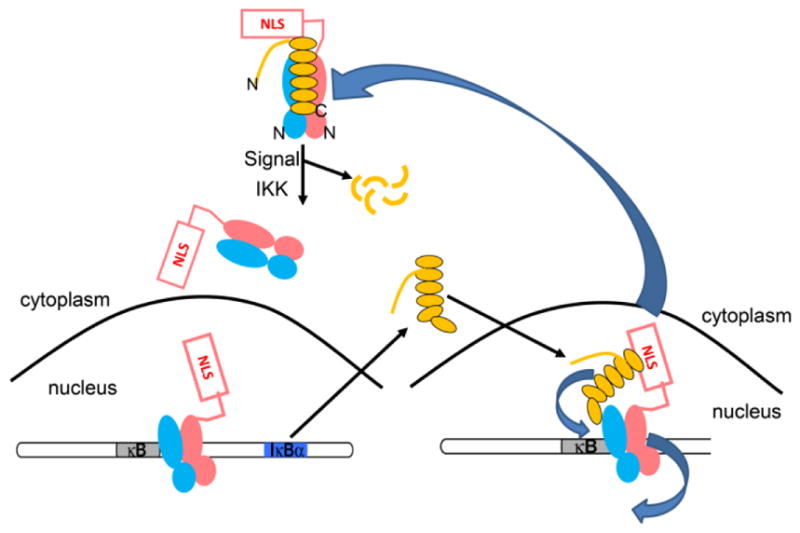Figure 1.

IκBα regulates NFκB activity. (A) IκBα (yellow) sequesters NFκB (salmon and cyan) in the cytoplasm. The N- and C-termini of IκBα are labeled and the N-termini of the NFκB heterodimer are also marked. When an extracellular stress signal (e.g., LPS, TNFα) is received, IκBα is phosphorylated by IKK, ubiquitinated, and degraded, thus unmasking the NFκB nuclear localization signals (NLS) whereupon it enters the nucleus and binds to κB DNA sites. (B) One of the genes under control of the κB promoter is IκBα, so newly synthesized IκBα then enters the nucleus, strips NFκB from DNA, and exports NFκB out of the nucleus.
